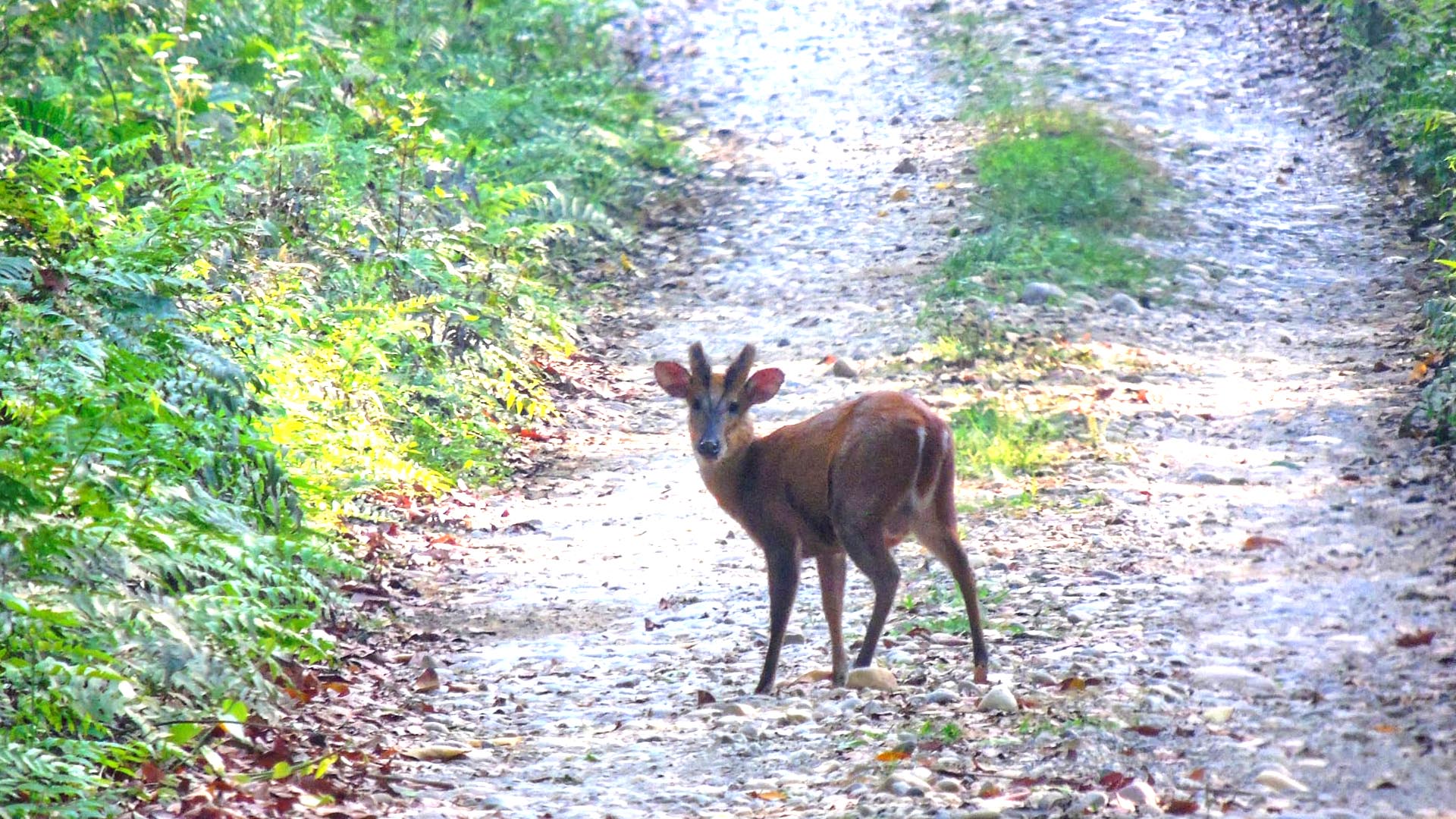Barking Deer or Red Deer or Muntjac
August 19, 2022

Barking Deer or Red Deer or Muntjac
Muntiacus muntjak (Zimmermann)
Local Name: Ratuwa or Rate
The barking deer is a medium-sized deer. Its antlers are small, with short brown tines and one unbranched beam. They are set on bony hair-covered pedicels which extend down each side of the male face as bony ridges, hence the name ‘rib-faced deer’. In does, tufts of bristly hair replace the horns. This small reddish deer is the so-called red deer. Old males are brown in color. In the male deer, upper canines are well developed and are used by the animal in self-defense. The young are spotted white until about six months. The height at the shoulder of an adult is from 50 to 75 cm and it weighs 22 to 23 kg.
Barking Deer is distributed widely throughout Asia. In Nepal, their range extends from the lowland Terai at altitudes of less than 100 meters up to the highlands, to about 3,500 meters in the Himalayas. The protected areas of Nepal are Chitwan National Park, Bardia National Park, Banke National Park, Parsa National Park, Shuklaphanta National Park, Langtang, Dhorepatan, Rara, Shey Phoksundo, and many more.
Ecology and Behaviour of Barking Deer
Barking deer are widespread in oak and lower conifer forests up to 11,000 – 11,500 feet elevations. Barking deer are also found in Langtang, Shey-Phoksundo, and Lake Rara National Parks. They have been recorded from Dhorpatan and Rasuwa. They are common in all nature parks of Terai foothills. Although the species prefers gently sloping terrain, it also occurs in the steeper hills. The barking deer or red deer are found in India-Malayan countries and also found in China, Formosa, Japan, Ceylon, north India, and Nepal.
The red deer are seen singly or in pairs or in small parties. It makes a barking sound when alarmed so it also is called “barking deer” in English. It usually barks in the morning and evening, sometimes after dark. When alarmed, it gives out a series of short crackling barks. It is a timid and shy animal. It keeps more or less to the same areas. The home range is comparatively small compared to chital and hog deer. It needs to drink water at least once a day, mainly in the morning or at noon. The red deer do not visit salt-licks as regularly as other deer species.
It is a solitary deer. Male individuals live a solitary existence and become more aggressive during the onset of a rut Barking deer appear to be crepuscular or even nocturnal in their habit, seldom moving around during the day unless disturbed. When dazzled with a torch, their eyes are seen glowing like rubies. At an incident in Royal Suklaphanta Wildlife Reserve, the author observed some inquisitive barking deer, trying to discover the source of light at night. Then with a sudden loud bark, they dashed away, warning the whole neighborhood. On a second encounter with a jeep at night, the barking deer just penetrated deep into thickets and vanished noiselessly into the darkness.

Breeding Rate in Wild
It breeds in all seasons. The rut takes place mainly in cold weather generally from December to February. The young, usually one sometimes two, are born at the beginning of the monsoon and the males shed their small horns in May and June. The gestation period is about six to seven months. Prater (1971) believed the frontal glands on the forehead of the deer to be scent glands activated during the mating period and serve as a means of attracting the hinds. The barking deer is still plentiful in the national parks and wildlife reserves of Nepal.
Source: Wildlife of Nepal
Similor Informations
Deer and Antelope in Chitwan National Park
